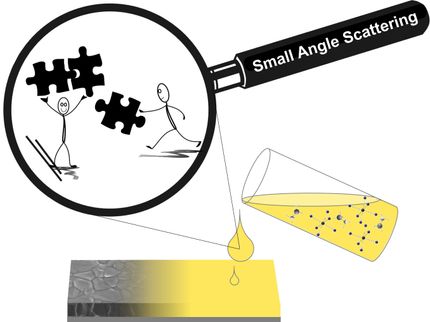Charge transport in hybrid silicon solar cells
Advertisement
The system they investigated is based on conventional n-type silicon wafers coated with the highly conductive polymer mixture PEDOT:PSS and displays a power conversion efficiency of about 14%. This combination of materials is currently extensively investigated by many teams in the research community.
"We systematically surveyed the characteristic curves, the dark current as well as the capacitance of such devices using silicon wafers with different doping concentrations" explains Sara Jäckle, lead author of the article and Ph.D. student in Prof. Silke Christiansen's team (HZB Institute of Nano-architectures for Energy Conversion and research group leader at the Max Planck Institute for the Science of Light MPL in Erlangen). "We learned that the characteristic curves in the dark as well as the open-circuit voltage of the solar cells are dependent on the doping concentration of the silicon wafer. This behaviour and the order of magnitude of the measured values do not correspond at all to those of a typical Schottky junction."
The result is surprising because the n-type silicon is a typical semiconductor, while PEDOT:PSS is usually described as a metallic conductor. Up to now it has therefore been assumed that a typical metal-semiconductor junction would exist between these two materials, one that can be described by the Schottky equation.
Supported by measurements also in collaboration with the research team of Prof. Klaus Lips (Energy Materials In-Situ Laboratory Berlin (EMIL), Institute for Nanospectroscopy) the data and a comparison with theoretical models demonstrate otherwise. In a junction with n-type silicon, the conductive organic layer behaves like a p-type semiconductor rather than a metal. "The data shows a dependence on the degree of doping in the n-material just like a heterojunction between a p- and n-type semiconductors does", says Sara Jäckle.
"This work deals with a very important aspect of these kinds of hybrid systems, namely the behaviour at the interface", says Silke Christiansen. "The results are probably also valid for other hybrid systems, important for photovoltaics or other optoelectronic applications such as perovskite solar cells. They suggest new ways for optimising devices by tuning the interface properties".
































































